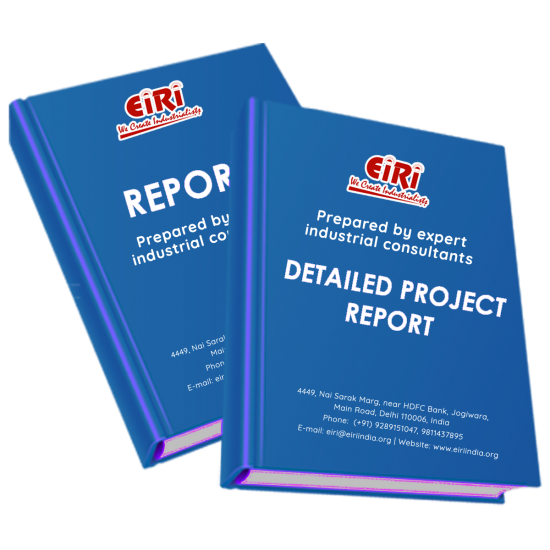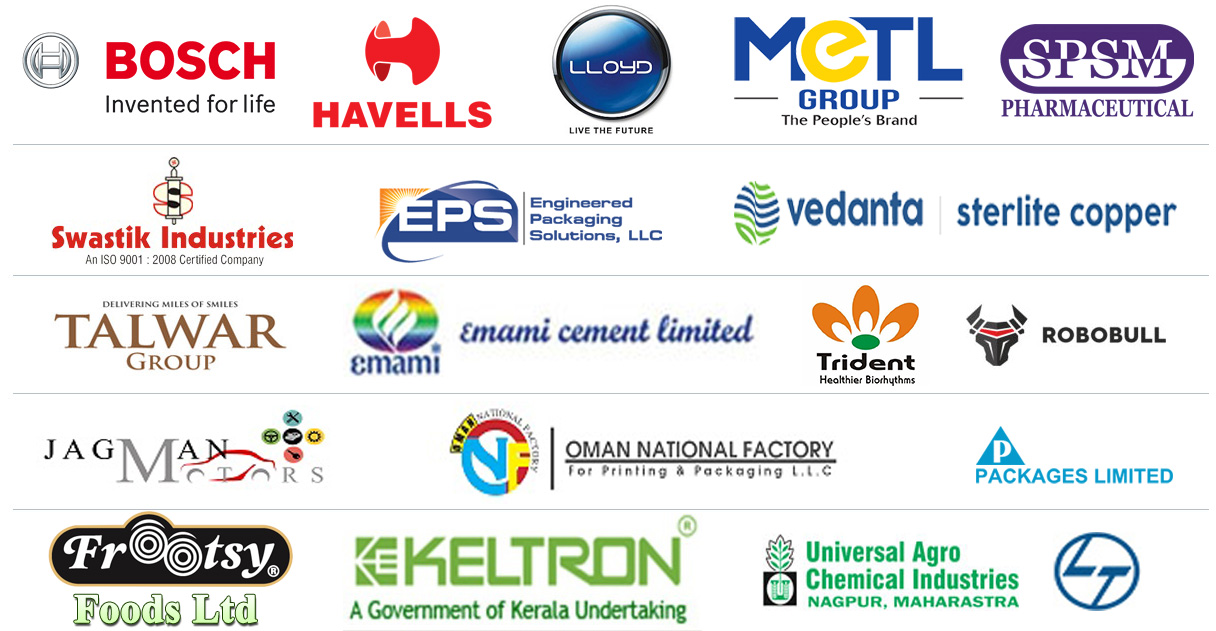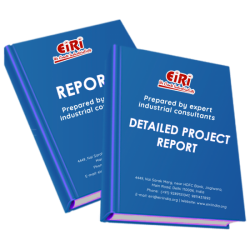Detailed Project Report on polyol used for polyurethane

- More than 40 years of experience
- Managed by expert industrial consultants
- ISO 9001-2015 Certified
- Registered under MSME, UAM No: DL01E0012000
- 24/5 Research Support
Get your quesries resolved from an industry expert. Ask your queries before report or book purchase. - Custom Research Service
Speak to the our consultant to design an exclusive study to serve your research needs. - Quality Assurance
All reports are prepared by highly qualified consultants & verified by a panel of experts. - Information Security
Your personal & confidential information is safe & secure.
Polyols are higher molecular weight materials manufactured from an initiator and monomeric building blocks. They are most easily classified as polyether polyols, which are made by the reaction of epoxides (oxiranes) with an active hydrogen containing starter compounds, or polyester polyols, which are made by the polycondensation of multifunctional carboxylic acids and hydroxyl compounds. They can be further classified according to their end use as flexible or rigid polyols, depending on the functionality of the initiator and their molecular weight. Taking into account functionality, flexible polyols have molecular weights from 2,000 to 10,000 (OH# from 18 to 56). Rigid polyols have molecular weights from 250 to 700 (OH# from 300 to 700). Polyols with molecular weights from 700 to 2,000 (OH# 60 to 280) are used to add stiffness or flexibility to base systems, as well as increase solubility of low molecular weight glycols in high molecular weight polyols. Polyether polyols come in a wide variety of grades based on their end use, but are all constructed in a similar manner. Polyols for flexible applications use low functionality initiators such as dipropylene glycol (f=2), glycerine (f=3) or a sorbitol/water solution (f=2.75).[15] Polyols for rigid applications use high functionality initiators such sucrose (f=8), sorbitol (f=6), toluenediamine (f=4), and Mannich bases (f=4). Propylene oxide is then added to the initiators until the desired molecular weight is achieved. Polyols extended with propylene oxide are terminated with secondary hydroxyl groups. In order to change the compatibility, rheological properties, and reactivity of a polyol, ethylene oxide is used as a co-reactant to create random or mixed block heteropolymers. Polyols capped with ethylene oxide contain a high percentage of primary hydroxyl groups, which are more reactive than secondary hydroxyl groups. Because of their high viscosity (470 OH# sucrose polyol, 33 Pa·s at 25 °C), carbohydrate initiated polyols often use glycerine or diethylene glycol as a co-initiate in order to lower the viscosity to ease handling and processing (490 OH# sucrose-glycerine polyol, 5.5 Pa·s at 25 °C). Graft polyols (also called filled polyols or polymer polyols) contain finely dispersed styrene-acrylonitrile, acrylonitrile, or polyurea (PHD) polymer solids chemically grafted to a high molecular weight polyether backbone. They are used to increase the load-bearing properties of low-density high-resiliency (HR) foam, as well as add toughness to microcellular foams and cast elastomers. PHD polyols are also used to modify the combustion properties of HR flexible foam. Solids content ranges from 14% to 50%, with 22% and 43% being typical. Initiators such as ethylenediamine and triethanolamine are used to make low molecular weight rigid foam polyols that have built-in catalytic activity due to the presence of nitrogen atoms in the backbone. They are used to increase system reactivity and physical property build, and to reduce the friability of rigid foam molded parts. A special class of polyether polyols, poly(tetramethylene ether) glycols are made by polymerizing tetrahydrofuran. They are used in high performance coating and elastomer applications. Polyester polyols fall into two distinct categories according to composition and application. Conventional polyester polyols are based on virgin raw materials and are manufactured by the direct polyesterification of high-purity diacids and glycols, such as adipic acid and 1,4-butanediol. They are distinguished by the choice of monomers, molecular weight, and degree of branching. While costly and difficult to handle because of their high viscosity, they offer physical properties not obtainable with polyether polyols, including superior solvent, abrasion, and cut resistance. Other polyester polyols are based on reclaimed raw materials. They are manufactured by transesterification (glycolysis) of recycled poly(ethyleneterephthalate) (PET) or dimethylterephthalate (DMT) distillation bottoms with glycols such as diethylene glycol. These low molecular weight, aromatic polyester polyols are used in the manufacture of rigid foam, and bring low cost and excellent flammability characteristics to polyisocyanurate (PIR) boardstock and polyurethane spray foam insulation. Many polyols are polydispersive materials, being blends of two or more polyols each of specific molecular weights, to give intermediate molecular weight materials. It is not unusual to find blends of polyether and polyester polyols, to give specific compromises in properties.
POLYOL USED FOR POLYURETHANES (EIRI-1027)
Cost Estimation
Plant Capacity 20 Tons/Day
Land & Building (Area 10000 Sq.Mt.) Rs. 5.27 Cr.
Plant & Machinery Rs. 2.76 Cr.
W.C. for 3 Months Rs. 10.98 Cr.
Total Capital Investment Rs. 19.19 Cr.
Rate of Return 82%
Break Even Point 20%
• EIRI can modify the Capacity of the Project and Total Capital Investment as per your requirement.
• Note: The project investment cost and capacity are subject to change without any notice. Future projects may have different values of project cost and capacity.
MARKET SURVEY CUM DETAILED TECHNO
ECONOMIC FEASIBILITY REPORT covers
- Introduction
- Uses and Applications
- Properties
- Market Survey with future aspects
- Present Manufacturers
- Detailed Process of Manufacture
- Formulations
- B.I.S. Specifications
- Process Flow Sheet Diagram, Plant Layout
- Method
- Reference Method 1
- Reference Method 2
- Method A1
- 1. Structure of Starter
- Figures
- 2. Impurities in the Starter and Moles PO/Moles Starter in the Initiator Feed
- Tables
- 3. Catalyst Level/Catalyst Type
- Method 1
- Preliminary Screening Experiments
- Method 2
- Steric Effects of the Starter on DMC Catalyst Initiation
- Method 3
- Conventional Polyol Initiators
- Method 4
- Effect of PO/Starter Ratio and Impurities on PO Initiation Rate
- Method 5
- Effect of Impurities on PO Starter Initiation
- Method 6
- DMC Catalyst Comparison
- Method 7
- Single Reactor Batch Process for TMP (See Table 6)
- Method 8
- Preparation of Unneutralised Polyether Polyol
- Neutralisation
- COMPARATIVE METHODS A AND B
- Polyols Suppliers
- Contact Details
- Cost Economics with Profitability Analysis
- Capacity
- Land & Building Requirements with Rates
- List & Details of Plant and Machinery with their Costs
- Raw Materials Details/List and Costs
- Power & Water Requirements
- Labour/Staff Requirements
- Utilities and Overheads
- Total Capital Investment
- Turnover
- Cost of Production
- Break Even Point
- Profitability
- Land Man Ratio
- Suppliers of Plant & Machineries and Raw Materials
- Cash Flow Statement
- Repayment Schedule
- Interest Chart
- Depreciation Chart
- Projected Balance Sheet for 5 Years etc
Engineers India Research Institute (EIRI) is a renowned name in the industrial world for offering technical and financial consultancy services.
EIRI services are:
Detailed Feasibility Reports
New Project Identification
Project Feasibility and Market Study
Identification of Lucrative Industrial Project Opportunities
Preparation of Project Profiles / Pre-Investment and Detailed Feasibility Studies,
Market Surveys / Studies, Market Survey Cum Detailed Techno-Economic Feasibility Reports
Project Reports in CD Roms
Identification of Plant /Process/Machinery and Equipment, Industrial General Guidance for setting up new industrial projects.
Our most up-to-date and Technologically Advanced Industrial Project Reports, categorized with respect to Financial Outlays and Sector – wise Classification are immensely useful for :
Existing Small or Medium Scale Industrialists facing competition from large houses
Young Entrepreneurs dreaming to start their own industrial enterprise
Young Graduates and Professionals wishing to begin their career
Industrialists interested in Debottlenecking their capacities & New Product – Lines
Large Industrial Houses pursuing Expansion, Growth and Diversification Plans
Latest Books
How to Make Project Report?
Detailed Project Report (DPR) includes Present Market Position and Expected Future Demand, Technology, Manufacturing Process, Investment Opportunity, Plant Economics and Project Financials. comprehensive analysis from industry covering detailed reporting and evaluates the position of the industry by providing insights to the SWOT analysis of the industry.
Each report include Plant Capacity, requirement of Land & Building, Plant & Machinery, Flow Sheet Diagram, Raw Materials detail with suppliers list, Total Capital Investment along with detailed calculation on Rate of Return, Break-Even Analysis and Profitability Analysis. The report also provides a birds eye view of the global industry with details on projected market size and then progresses to evaluate the industry in detail.
We can prepare detailed project report on any industry as per your requirement.
We can also modify the project capacity and project cost as per your requirement. If you are planning to start a business, contact us today.
Detailed Project Report (DPR) gives you access to decisive data such as:
- Market growth drivers
- Factors limiting market growth
- Current market trends
- Market structure
- Key highlights
Overview of key market forces propelling and restraining market growth:
- Up-to-date analyses of market trends and technological improvements
- Pin-point analyses of market competition dynamics to offer you a competitive edge major competitors
- An array of graphics, BEP analysis of major industry segments
- Detailed analyses of industry trends
- A well-defined technological growth with an impact-analysis
- A clear understanding of the competitive landscape and key product segments
Need Customized Project Report?
- Ask for FREE project related details with our consultant/industry expert.
- Share your specific research requirements for customized project report.
- Request for due diligence and consumer centric studies.
- Still haven't found what you're looking for? Speak to our Custom Research Team
About Engineers India Research Institute:
Note: We can also prepare project report on any subject based on your requirement and country. If you need, we can modify the project capacity and project cost based on your requirement.
Our Clients

Our Approach
- Our research reports comprehensively cover Indian markets (can be modified as per your country), present investigation, standpoint and gauge for a time of five years*.
- The market conjectures are produced on the premise of optional research and are cross-accepted through associations with the business players
- We use dependable wellsprings of data and databases. What's more, data from such sources is handled by us and incorporated into the report
Why buy EIRI reports?
- Our project reports include detailed analysis that help to get industry Present Market Position and Expected Future Demand.
- Offer real analysis driving variables for the business and most recent business sector patterns in the business
- This report comprehends the present status of the business by clarifying a complete SWOT examination and investigation of the interest supply circumstance
- Report gives investigation and top to bottom money related correlation of real players/competitors
- The report gives gauges of key parameters which foresees the business execution























